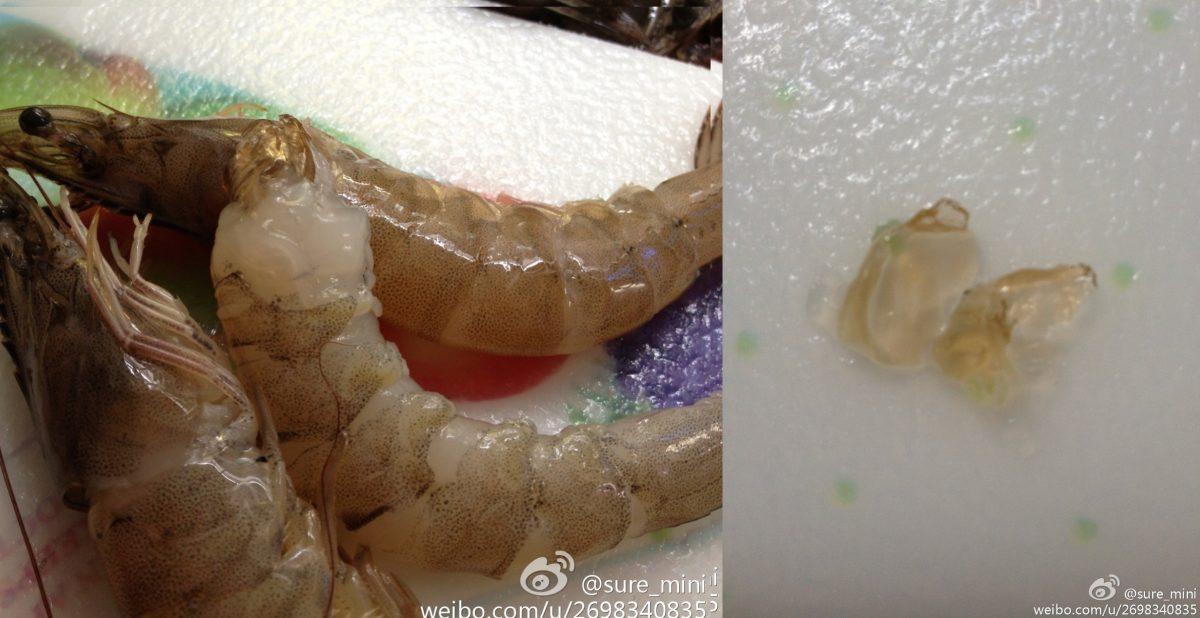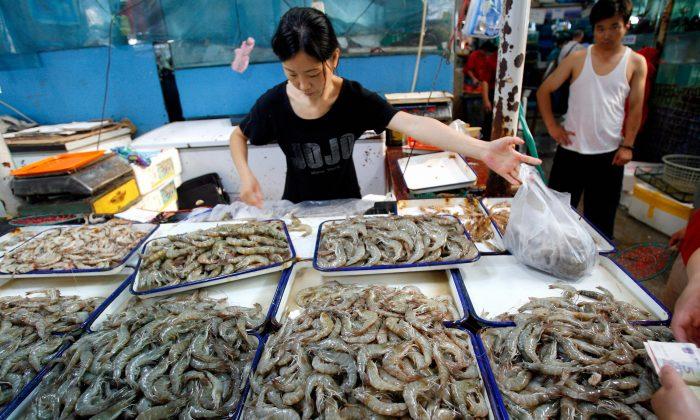Ms. Yang in the southern China port city of Guangzhou bought six high priced giant tiger prawns in October—she was happy with the purchase until she found gel inside the heads of the prawns.
Such gel, the presence of which is not typically detectable upon superficial inspection, is injected some time between when the shrimp are caught and when they’re sold, in order to add weight and thus earn a greater profit. Shrimp sold live have not been injected, because the injection would kill the shrimp.
Chinese food authorities have not been particularly active in pursuing the cases brought to their attention, according to interviews and news reports, and there is not even a consensus at which point in the production line the operation takes place.
The problem of adulterated shrimp has persisted for over a decade, despite new cases regularly reported in the Chinese press. Some of the first well-publicized cases of the gel-injected shrimp appeared in 2005, the same year in which the municipal government of Tianjin launched a strike-hard campaign against shrimp injectors. The report, which referred to the campaign gave no details about how many were arrested, or whether the shrimp adulteration rings were broken.
An Unwelcome Gelatinous Addition
In some of the cases that have been examined—not always an easy task in China—the gelatin found in the shrimp was the innocuous, edible kind. It is usually extracted from animal skins and bones, and composed of collagen. But because the operation is illegal and unsupervised, there is no telling whether the next gel used will be industrial.Wu Wenhui, a professor at Shanghai Ocean University, said in an interview in the Chinese press that customers should be wary about industrial gel ending up in shrimp, given that it’s cheaper than the edible version. “Industrial gel is used for furniture, print, and contains many heavy metals such as lead and mercury, which harms the liver and blood, and is even carcinogenic.”

But the act of injection is itself potentially unsafe.
“Even if what was injected was edible gel, which may not itself be harmful, who can guarantee that the process is aseptic? ” said Liu Huiping, a member of the executive council of the Tianjin aquatic products association, in an interview with the Beijing News.
Why It Continues
The scandal of injecting shrimp has been known, and has persisted, for over a decade.Commentary articles in the Beijing Youth Daily point out that this scandal exposes the ineffectiveness of China’s food regulation system. According to these articles, there are too many departments and an unclear division of labor. With poor cooperation between the departments, holes in regulations easily emerge. Even with the reorganization of the State Food and Drug Administration in 2013, the situation hasn’t improved.
There appears to be a lack of will to solve the problem. An investigation by Beijing News was revealing. Cui Hongtao, the deputy director of administration for industry and commerce in the seaport of Tianjin told Beijing News that the administration for Industry and Commerce only accepts products for investigation that have already failed the Agricultural Department’s examination.
The journalist then took shrimp to several Agricultural Department offices, and was told that the examination could not be conducted without a clear objective, otherwise they “don’t know where to start.”
But the examination of injected shrimp is not complicated. Cui Chunming, deputy director of the Tianjin Sanitation Supervision Department, told Beijing News, ‘There is no need for examination, because you can tell whether there has been an injection with your own eyes. Regardless of what’s being injected, it is not allowed, and the adulterating is illegal behavior.”
Several shrimp sellers in different places in China told Chinese media that they got the gel-injected shrimp from the wholesaler. In a 2012 case, a shrimp seller said, “This kind of shrimp has already been here for a long time. Beginning five years ago they came like this from the wholesalers.”
A rough picture emerges in which greed trumps morality, and the state is ineffective or worse in responding.





